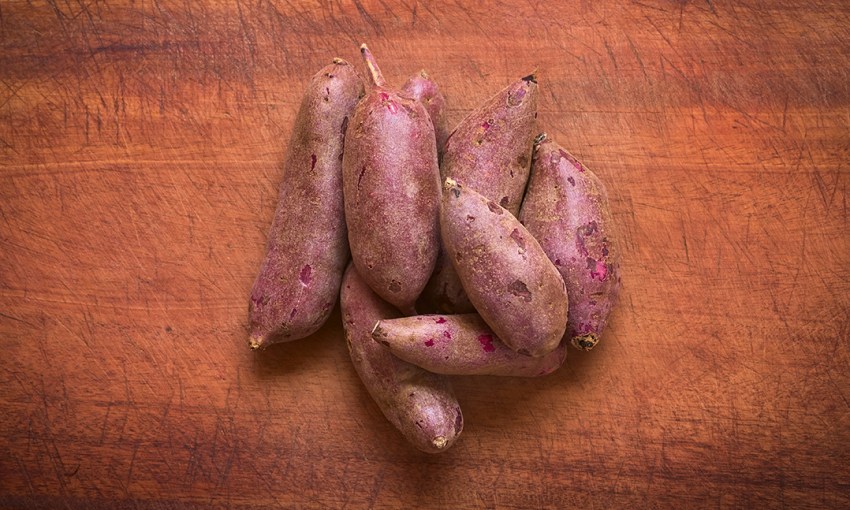Colourful, tasty and healthy, sweet potatoes are surprisingly easy to cultivate at home.
In the garden: Sweet success
The sweet potato we know and most of us love is Ipomoea batatas. Sweet potato is native to Central and South America but has been adopted as a popular crop in most regions of the world.
If the plant – or rather the vine – looks familiar to you, that’s because it is a group of plants from the convolvulaceae family, more commonly known as the morning glory. It is a far distant relative of the potato (nightshade family) that we eat. Sweet potatoes are a warm-weather crop that are easy to grow in many areas of South Australia. However, they do need a little more growing space than their distant relatives.
Sweet potatoes come in a range of colours and sizes from purple, cream and yellow, they are starchy, of course, sweet tasting. They grow as a tuber, making them a root vegetable. They are nutritious, versatile and are super rich in vitamin A and C
The Pacific islander communities grow them for the vines as well as the tuber, using the young leaves like spinach or even as greens in salads. Here in Australia, we mainly see three cultivars in the retail fruit and vegetable outlets. The American bred Beauregard with its pink skin and orange flesh, the Kestle which is Australian bred, is thinner and The Northern Star, this is the purple skin and white flesh. I generally buy all three as they come and go out of season, they all add so much more interest and taste to many of our traditional recipes, such as roasts and mash potatoes. They make excellent crisps and hot chips. I must admit that I have had the most success with growing The Northern Star.
Sweet potatoes require a sunny, frost-free, well-drained growing area, reaching maturity somewhere between 90 to 170 days, depending on the variety. They can be grown in the ground or in large containers. Make sure that the soil has been enriched with compost or aged manure, and be mindful not to use a fertiliser with a high nitrogen level, as this can damage the young plants.
Unlike normal potatoes, sweet potatoes grow from an individual rooted shoot called a “slip”, the new tuber will grow from this root system downward.
To grow a slip, allow the tuber to develop a root system, just as you would normal potatoes. Mine love being lost in the crisper drawer of the fridge, they seem to shoot well there! When it has developed a root and leaf system, carefully twist off the individual plants with their root system intact and plant them out.
Plant out a week or two into spring, when any likelihood of frost has finished. The plants will develop quickly as the weather warms, and the vine will grow rampantly. The sweet potato has a delightful violet flower (like a morning glory plant) and the vine can be trained as a temporary creeper or ground cover.
As far as harvesting goes, wait until we really get into the colder months and the vines are looking half dead, this is the time to harvest. Dig or lift carefully out of the ground, and if you leave any behind, don’t worry, you can leave them in the ground and dig when required. They will be much bigger when you dig them up the same time next year!
Pick up your sweet potatoes for growing from farmers’ markets and organic veggie outlets if possible, and don’t be concerned if they are not “named varieties” just pick out the healthiest as they are all great tasting and easy to grow.
This story first appeared in the Spring 2019 issue of SALIFE Gardens & Outdoor Living magazine.



